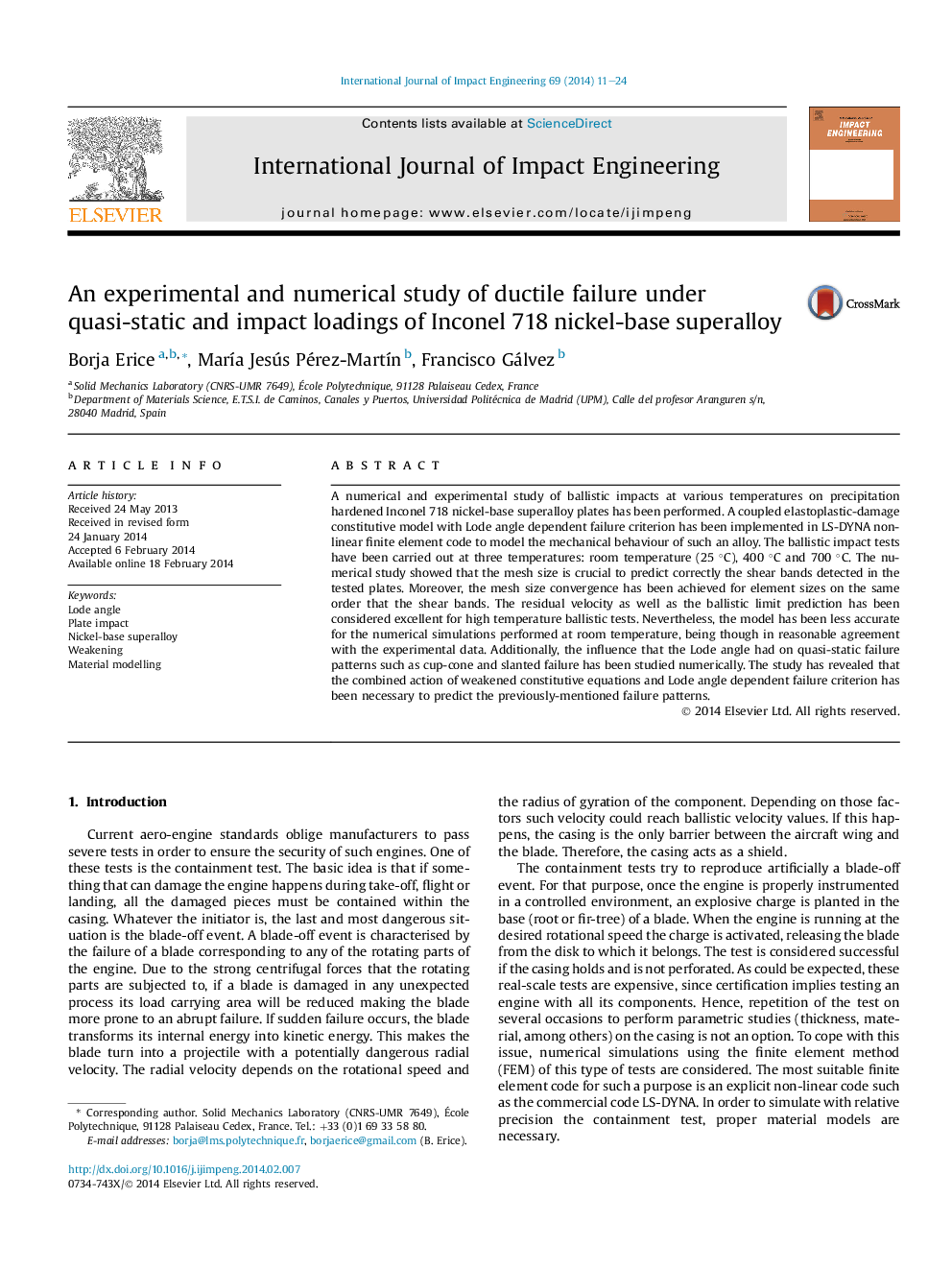| Article ID | Journal | Published Year | Pages | File Type |
|---|---|---|---|---|
| 776488 | International Journal of Impact Engineering | 2014 | 14 Pages |
•A numerical and experimental study of ballistic impacts at various temperatures on Inconel 718 superalloy plates.•A coupled elastoplastic-damage constitutive model with Lode angle dependent failure is proposed.•The numerical study showed that the mesh size is crucial to predict correctly the shear bands detected in the tested plates.
A numerical and experimental study of ballistic impacts at various temperatures on precipitation hardened Inconel 718 nickel-base superalloy plates has been performed. A coupled elastoplastic-damage constitutive model with Lode angle dependent failure criterion has been implemented in LS-DYNA non-linear finite element code to model the mechanical behaviour of such an alloy. The ballistic impact tests have been carried out at three temperatures: room temperature (25 °C), 400 °C and 700 °C. The numerical study showed that the mesh size is crucial to predict correctly the shear bands detected in the tested plates. Moreover, the mesh size convergence has been achieved for element sizes on the same order that the shear bands. The residual velocity as well as the ballistic limit prediction has been considered excellent for high temperature ballistic tests. Nevertheless, the model has been less accurate for the numerical simulations performed at room temperature, being though in reasonable agreement with the experimental data. Additionally, the influence that the Lode angle had on quasi-static failure patterns such as cup-cone and slanted failure has been studied numerically. The study has revealed that the combined action of weakened constitutive equations and Lode angle dependent failure criterion has been necessary to predict the previously-mentioned failure patterns.
